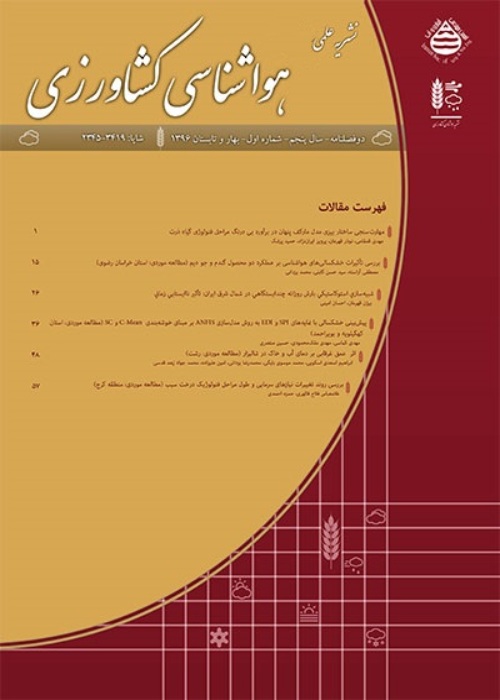A Comparative study on climate maps of Iran in extended de Martonne classification and application of the method for world climate zoning
De Martonne climate classification is one of the first generation of classifications that are mainly aimed to assess plant ecology and the degree of aridity of areas in relation to their natural vegetation. This classification is quantitative and its climatic ranks are defined based on the values of the aridity index (P is average annual precipitation in mm and T is average annual temperature in °C). In order to increase its efficiency in climatic identification of different regions, especially those located in the middle latitudes such as Iran two extensions have been applied to this classification (Khalili 1988): 1) due to recognizable difference that can be seen in the vegetation geography of the arid zone areas, its climate , was divided into two sub-climates named Extra-arid and Arid desert climate; 2): Due to the importance of the role of winter temperatures in the plant ecosystem, each climate class was divided into four sub-climates: very -cold, cold, moderate and warm based on the average minimum daily temperature in the coldest month of the year (m) .The article states that the two parameters (T) and (m) can represent the annual temperature regime, and for this reason, the (m) parameter increases the classification accuracy. The thresholds (a) and (m) of this classification are presented in Table 1 in the main text. A comparative study of the researches carried out for the preparation of two climate maps of Iran in the E.D.C. showed that the differences are primarily due to the density of the network of stations and their dispersion rather than the difference in climatic periods. In this article, an attempt has been made to classify the climate of the world in the Extended de Martonne system. The aridity index is indeterminate or meaningless in areas where the average annual temperature is equal to or less than -10 °C, so their climate cannot be defined in E.D.C.. Because there is such a situation in the arctic as well as in the high latitudes, their climate was named " polar" which covers 15% of the world's land .In addition, it has been shown that the (a) index does not provide an accurate assessment of the aridity of the environment in areas where the average annual temperature is in the range of -5 to -10°C. The climate of these regions was called quasi-polar, which is discussed in this article. About 8.5% of the world's landmasses have this feature.
- حق عضویت دریافتی صرف حمایت از نشریات عضو و نگهداری، تکمیل و توسعه مگیران میشود.
- پرداخت حق اشتراک و دانلود مقالات اجازه بازنشر آن در سایر رسانههای چاپی و دیجیتال را به کاربر نمیدهد.


